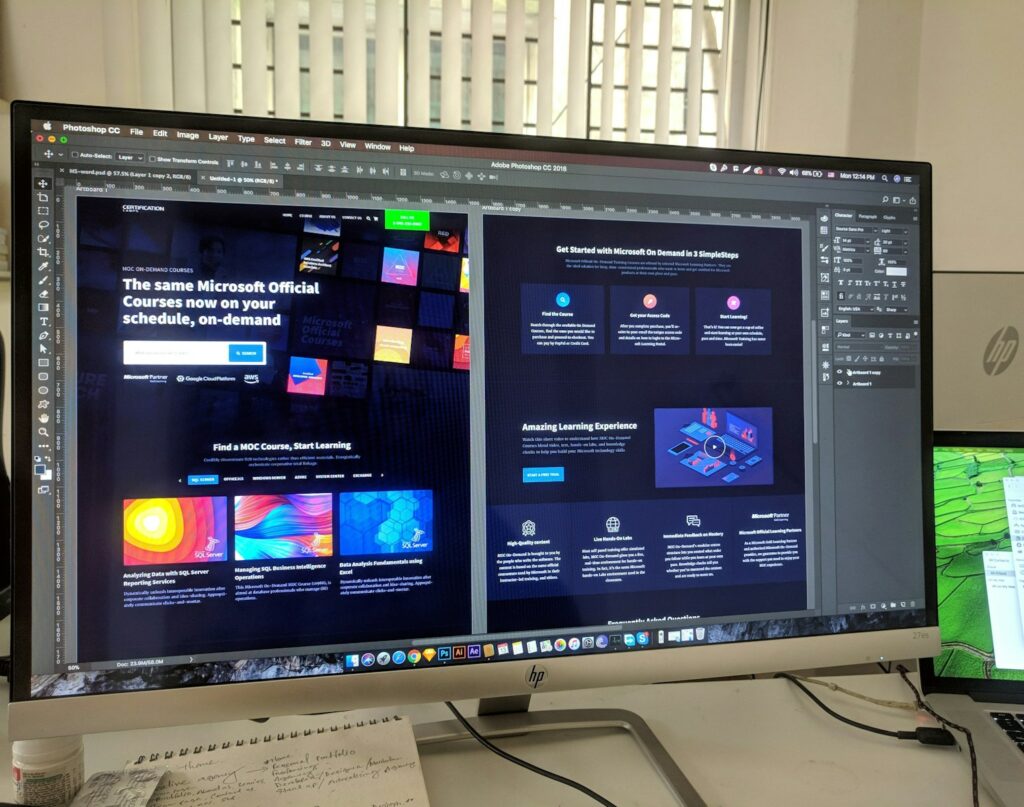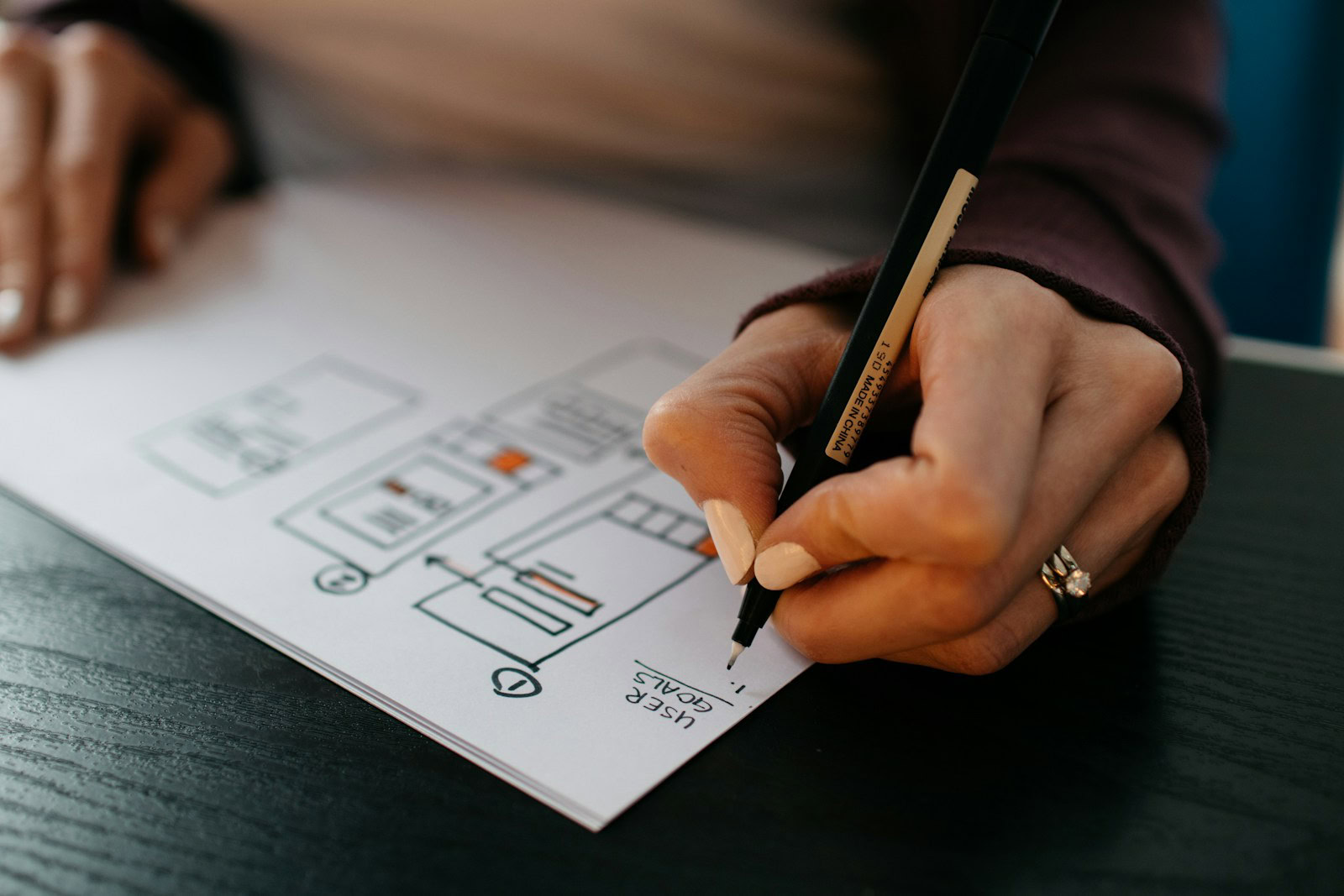How Web Design Impacts Content Marketing

Web design plays a fundamental role in the success of content marketing efforts. A website’s design is not merely about aesthetics. It’s also a pivotal factor in user experience and engagement, which, in turn, impacts the effectiveness of content marketing.
A well-designed website ensures that valuable content is not only noticed but also read, shared, and acted upon. Given the rapid pace at which digital content is consumed, the importance of incorporating strategic design elements cannot be understated in order to capture and maintain audience attention.
In a digital landscape where every company competes for visibility, the alignment of web design with content marketing strategy becomes essential for standing out. Good design can make content more discoverable through search engine optimization and more appealing by guiding the user’s journey through intuitive navigation. It also helps establish brand credibility and trust, which are crucial for conversion rate optimization.
Furthermore, by leveraging design elements that enhance user engagement, companies can better achieve their content marketing objectives, making design a powerful tool for measuring and optimizing success.
Key Takeaways
Contents
- Effective web design amplifies content marketing by improving user engagement and experience.
- Strategic design elements are crucial for optimizing content discoverability and brand credibility.
- Analyzing web design impact on content marketing success aids in refining strategy and increasing conversions.
The Role of Web Design in Content Marketing Strategy
Web design plays a crucial role in shaping content marketing strategy. It goes beyond just aesthetics to affect how users interact with content, the perception of the brand, and website visibility for SEO.
- User Experience (UX): A strong web design offers a seamless and intuitive interaction for visitors, delivering content in a manner that’s easy to navigate and engage with. Effective web design comprises well-structured navigation, quick load times, and mobile responsiveness that fosters a positive user experience.
- Brand Perception: The design language of a website communicates the brand identity. It should be professional and align with the company’s message to build trust and convey credibility. Colors, typography, and imagery must be consistent and relevant to the brand, enhancing recognition and connection with the target audience.
- SEO and Visibility: Web design elements like site structure, hierarchy, and the presence of alt text for images contribute to SEO. Good design supports content discoverability through search engines, increasing organic traffic that is crucial for any content marketing strategy.
- Conversion Rate: The goal of content marketing is not just to attract but to convert visitors into customers. Effective web design guides visitors through the buyer’s journey to prompts like ‘Sign Up,’ ‘Learn More,’ or ‘Buy Now,’ potentially improving the conversion rate.
In the intersection where design meets content, businesses create a platform where the audience can experience content in the best way possible. They utilize design to not only present content appealingly but to ensure that it’s accessible, engaging, and conducive to their content marketing strategy goals.
Crucial Web Design Elements That Enhance Content Marketing
Effective content marketing hinges on showcasing material in a manner that captivates and retains the audience’s attention. Web design plays a pivotal role in shaping the reader’s journey through strategic use of visual elements and navigational cues.
Visual Hierarchies and Readability
Good web design employs visual hierarchies to guide visitors through content methodically. Readability is enhanced using appropriate typography and colors, which make key information stand out and directionally flow from one section to the next.
Fonts and style must be consistent, with headings, subheadings, and body text properly differentiated. Meanwhile, bullet points and short paragraphs prevent overwhelming users with dense text blocks.
Responsive and Accessible Design
Responsive design ensures content marketing is effective across various devices, enhancing the UI/UX for every user.
On top of adjusting to screen sizes, responsive design includes clear navigation controls and visual elements that load swiftly and correctly. Meanwhile, accessibility is non-negotiable, with alternatives for different abilities, such as alt text for images, captions for graphics, and a high color contrast for text.
Branding and Visual Identity
The integration of brand personality into branding and visual identity solidifies the connection with the target audience.
Consistent use of specific colors, fonts, and graphics creates a memorable experience. Meanwhile, unique photos and images that align with the brand’s style convey a message that resonates and distinguishes from competitors.
Optimizing for Search Engines and User Engagement
Effective web design serves two critical functions: it boosts a site’s placement in search engine rankings and enhances user engagement. Mastering both can lead to higher conversion rates and a stronger online authority for the brand.
SEO Best Practices
Search Engine Optimization (SEO) is about fine-tuning website elements to improve visibility in Google search results. This involves using relevant keywords that correspond with the terms potential visitors are searching for.
SEO best practices also include creating quality content that incorporates keywords naturally, optimizing meta tags and descriptions, and ensuring all pages are indexed correctly by search engines.
- Keyword Research: Identify target keywords that are high in demand but low in competition.
- Quality Content: Develop content that adds value for the reader, setting the brand as an authority in its field.
- On-page Optimization: Apply keywords strategically in titles, headings, and throughout the page’s content.
Conversion Elements
Designing a website with conversion in mind involves directing website visitors towards calls to action (CTAs). The strategic placement of these elements can significantly increase conversion rates.
- CTA Placement: Position CTAs prominently to attract visitors’ attention.
- Design Consistency: Keep a consistent visual theme across all pages to build trust and make navigation intuitive.
User Engagement and Content Value
User engagement is directly related to the value the content provides to the visitor.
High-quality content that is engaging, informative, and entertaining keeps users on the site longer. This increases the likelihood of conversions and can improve search engine rankings due to positive user behavior signals.
- Interactive Elements: Incorporate elements like videos or quizzes to hold attention.
- Feedback Loops: Encourage visitor engagement through comments or social media shares.
Measuring Success: Analytics and Conversion Rate Optimization
In the realm of content marketing, Analytics play a pivotal role in assessing the performance of website design. They track user engagement, behavior, and patterns amidst website traffic. This data empowers marketers to formulate strategies for optimal lead generation and sales.
Conversion Rate Optimization (CRO) is a systematic approach used to increase the percentage of visitors who perform desirable actions on a website. These actions might include filling out a form, making a purchase, or subscribing to a newsletter. Effective CRO hinges on a deep understanding of user experience and behavior, facilitated by analytics.
Website Design directly influences user actions. A site that is intuitive, engaging, and easy to navigate is more likely to retain users and encourage customer satisfaction. In contrast, a cumbersome design can deter potential leads, thus impacting the ROI negatively.
Marketers should keep an eye on the following:
- Website Traffic: Quantity and source of visitors.
- Leads: The number of new potential customers generated.
- Sales: Conversion of leads into purchases.
- Customer Satisfaction: Feedback and retention rates.
To measure success adequately, one must analyze key performance indicators (KPIs) through tools such as Google Analytics. This assessment helps in identifying strengths and areas for improvement.
The union of analytics and CRO facilitates a methodical enhancement of the website to serve both the business’s and the users’ interests. Robust analytics and continuous optimization bolster lead generation efforts, ensuring that each visitor’s journey aligns with the business objectives.
